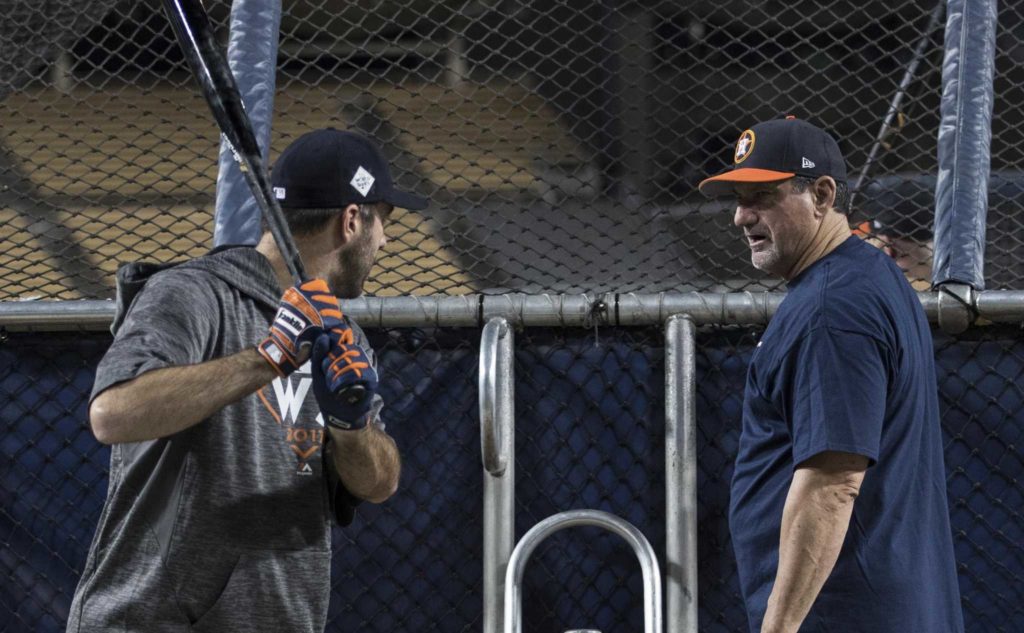
Below is a question I received from a good friend that turned into a glimpse of how I believe skills should be acquired, blended, and tested so they can show up when the lights turn on. This process (and piece) is not a finished product, but I think it is a great place to start if you are in the industry of solving movement problems to create on field transfer.
…
First, (in the assessment) I have to identify what parts of the swing or throw are not complicit with the universal movement attractors we have identified for optimal human movement. These principles apply not just to hitting or throwing, but all movement. Where it is not complicit will give me an idea for what kinds of problems they are experiencing, which is the most important part. If I can figure out what problems they are experiencing because of how they are currently moving (e.g. kid who can’t stop pelvis can’t keep his hard hit balls fair), we now have a starting point for our interventions.
When it comes to training, I have an idea in my head based on what I’ve gathered so far of where I’d like to start. This part is critical. You have to find something that works early on. I’m also very transparent during this part of the process. I’ll openly tell kids I have no idea what’s going to work and that I might give them something that doesn’t work. Much of our work together will be very different from how they’ve trained before. I don’t want kids to get upset or defensive when we start to shake things up, because it has happened before.
If there is instability in the movement (movement not complicit with universal attractors), we have to magnify feedback around that area and make it loud. You have to make the body give a damn. Muscles don’t speak words, but they speak forces and inertia. Which means we have to give them large forces and changes in direction to get the body into a state where we have the opportunity to create a positive adaptation. It has to be obvious, too. If there are a couple different routes the body could take, it’s going to gravitate towards the one of least resistance. It needs to gravitate towards the one that is desirable, which is where environment design comes into play.
I’m going to start magnifying feedback around the one thing I think is going to clean up the movement most. This is usually what happens in the beginning or the end. Those, to me, are the two biggest areas we can really influence. A lot of guys get instant feedback when you give them a better first move (hinge instead of stack/sway/squat) or teach them how to stop (stop pelvis, get upper body through).
To make this practical, let’s say I have a kid who stacks or sways over their back side. They get stuck, don’t move forward, can’t close the back door (back leg rotates independently around pelvis), get caught in a poor landing position, and spin right out of it. The initial stack/sway is killing the move, so we have to address it. I can go in a variety of different directions:
- Walk in swing (teaches them how to gain ground and create a positive move towards the ball)
- Time pressure/hops (I can have him hop backwards, forwards, drop in from an elevated surface, cross his feet and uncross them)
- Feed mistake (put a resistance band around their chest and pull them backwards into sway)
- Feed better move (put a slant board on their back foto angled to help them gain direction)
- Narrow base/ feet together (tough to move back when your feet are together)
- Take away the forward move (feet cement/anchor to get a better feel for good landing position, especially if chest is in poor spot)
The one I pick will reflect how I feel about their athleticism, capacity for processing, and what I think their swing will look like if we get that first move right. For example, guys who overcook things in their head might do better with time pressure. Guys with sloppy bodies that can’t pull out slack might do better just feeling what a better landing position is. Guys with a pretty good swing who just need a nudge in the right direction might do really well with feed the mistake. Guys who need to feel and be athletic might do well when we get them walking or out of an environment in which they can robotic.
We’re going to learn the movement de-coupled from their current environment (bat, ball). This can happen with a waterball, different bat, punching bag, plyos, soccer balls, etc. I like the water implements for unstable moves because they are going to magnify the instability. So I’ll often put a waterball or bag (sometimes guys cheat the water balls with their arms and don’t rotate their body) in their hand and do one of the movements from above. Once we find a better or more stable movement, we’ll blend to something with a moving ball – or punching bag (big for guys that can’t pull out slack/brace into contact). We can do plyo flips and slowly get the movement comfortable with a moving object. So we’re starting to re-couple a moving ball with the new pattern, but gently. When it shows progress, we’ll blend to something more difficult like someone throwing overhand BP (relatively firm – don’t see much value in anything < 45 mph). This will really reveal the stability of the new movement and where/if it breaks down.
This process from above goes through a lot of different iterations. If the thing I tried didn’t work well, we’ll pivot to something else. If it did work well, we’ll progress it and I’ll inquire about feedback. I want to know what they ultimately notice between the good and bad reps. This gives me access to their vocabulary and teaches me how to talk to them. I never tell them what they should feel. I only ask what they notice rep to rep. It doesn’t have to be much, but it has to be something. The stuff we do will create a better pattern without killing things with words, but we do need to have a goal or objective, external feedback (video, ball flight, spin, exit velocity), and internal feedback (I felt or didn’t feel this). It doesn’t have to be complicated, but it has to be deliberate. There are no mindless rounds when building skill.
I think of drills and training tools early on as training wheels. We’re going to ditch the training wheels as soon as we can. Can’t fall in love training in environments that just don’t reciprocate game conditions/challenges. When we get things going, the training wheels turn into vitamins. You prime your swing with something that gives you good feedback on your swing (e.g. doing a walk in waterball swing before your round). We keep blending until the movement starts to show up with lower doses of vitamins. Early on, the blends will lean on de-coupled movement training where we’re stabilizing the swing and gathering good feedback rep to rep. I’ll capture as much of this as possible on video. We don’t break down the bad ones a ton, but I will make a point to show kids the good ones. They need a visual blueprint for what the good ones look like. If you can see it and feel it, you’re going to be more likely to re-create it. And this keeps me honest as an instructor, as well. How things look from the front throwing BP does not always match up what you see from the side.
When something works, we’re not going to spend a lot of time in environments that make us feel good. We’re going to challenge it fast. I think the influence of environment is critical for building a better pattern. Time pressure exposes – or influences – a lot of critical transitions throughout the swing. You can’t communicate time pressure with words. You need to communicate it using the language of the muscles. If there is an urgency to move, your body will pick up the slack and get it going. I’ve had kids who haven’t hit off the machine in years hit PRs off machine in 2 days. You just have to have a lot of patience and really encourage kids to be comfortable with bad rounds here and there. I’ve never seen someone take their best swing off flips. But I’ve seen a lot of really good moves off high velocity BP/machine work. I don’t think it’s a coincidence.
This last part is where the psychology of coaching becomes really important. It’s a lot of fun early on when you can really change how someone moves and make noticeable improvements, but it’s much harder to retain this excitement when you’re fighting for 5 percent instead of 50 percent. You have to keep priming the movements daily with exercises – coupled and de-coupled – that build good movement habits. You have to create challenges every day that keep the environment stimulating and engaging. It doesn’t have to be really hard every day (two machine, live work), but there has to be a goal worth achieving and a struggle to achieve that goal. This is what I’m currently really learning a lot about. Just getting guys comfortable with the idea that greatness is boring. There’s nothing sexy about showing up and doing a lot of the same stuff over and over. But it doesn’t mean we can’t switch things up a little here and there to take some of the boredom out of it.
So from a macro lens, my training approach is:
- Figure out the movement problems they are experiencing and understand how it influences batted ball problems on the field
- Figure out where your greatest ROI is going to be and start here
- Magnify feedback around the movement inefficiencies by de-coupling movement & skill
- Recouple movement & skill and blend new pattern
- If it sticks, progress it and challenge it. If it falls apart, de-couple movement and repeat blend
- Repeat step five (build it up, challenge it, watch it break down, build it back up)
- Callous the skill
- Have open line of communication with athlete where you are utilizing a number of different forms of feedback (video, verbiage, feel) to create long term movement changes
